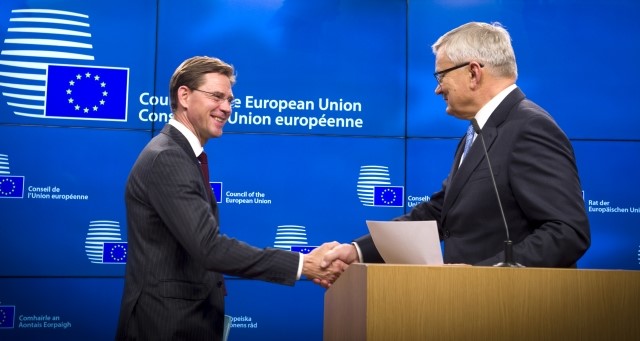Updates on Omnibus Regulation & CAP reform – Council Ministers’ perspective on the “Future of Food and Farming” Communication
© Ralf Kunze on Pixabay
This week, December 11th and 12th, Ministers of the Agriculture and Fisheries Council gathered in Brussels to discuss, amongst others, the Communication on the reform of the Common Agricultural Policy (CAP) – “The Future of Food and Farming” – which the European Commission had adopted on 29th November 2017.
Does the Communication on the CAP reform cover all key issues and challenges for the post-2020 CAP? Which are the central strategic issues for the future of CAP?
These were some of the questions addressed to the Council Ministers by Jyrki Katainen European Commission Vice-President for Jobs, Growth, Investment and Competitiveness, when presenting the document.
In the press conference following the meeting, Minister of Rural Affairs of the Republic of Estonia Tarmo Tamm spoke on behalf of the Council, generally appraising the proposed ideas set out in the CAP Communication: Ministers found the current CAP had already achieved its basic objectives and hence stressed that sufficiently large portion of EU budget should be allocated also to the CAP post-2020. Accordingly,
Ministers were in favour of the Commission’s suggestion to keep the main CAP structure as it is, based on two pillars, and reinforced the position that Direct Payments to farmers were further required, while moving to a result-based approach was much favoured.
- The Ministers opposed the idea of opening Pillar 1 (Direct Payments) to a co-financing through Member States, to allow equal opportunities between countries.
- The 2nd Pillar (Rural Development measures) was considered to play a key role in solving most agricultural problems.

From left to right: Mr Jyrki KATAINEN, Vice President of the European Commission; Mr Tarmo TAMM, Estonian Minister of Rural Affairs,11.12.2017, Brussels © European Commission
A new “delivery model”?
While agreeing to keep a two-pillar-framework, Ministers also welcomed some new aspects introduced by the Communication. Namely a stronger emphasis on environment and conservation issues as well as a new “delivery model” – an attempt to acknowledge that the previous, rather prescriptive one-size-fits-all approach, could not sustain:
The Communication calls for an increased subsidiarity, meaning that the policy objectives agreed on at EU level will be translated into concrete national or regional strategic plans by the Member States.
Even though aimed at cutting down bureaucracy for Member States and at ensuring fit measures, this delivery mechanism is strongly criticised by member states, civil society and NGOs as it moves towards a renationalization, creating a market situation where farmers will have unequal competition conditions. Commissioner Katainen disagrees, assuring it wouldn’t happen as environmental and climate objectives in the CAP are set at EU level and Member States would have to propose their respective strategy drafts to the Commission – who will only approve them if they ensure the maintenance of a common approach to the delivery of environment and climate objectives across the Member States.
Further, while in favour of a “new delivery model”, Ministers call on the Commission to consider environmental, climate and biodiversity conservation objectives when reviewing agri-environmental measures, Greening measures (which the Commissions would like to see scrapped) and Cross-Compliance.
Council Ministers’ recommendations
Some flaws named by Council Ministers were the remaining need to introduce a real simplification and to develop effective risk management and market measures within the Communication.
Ministers found more funds of budget must be dedicated to research, development & innovation in agriculture, food and drink production as well as in rural development.
Thus arguing in line with the Commissions drive to look at opportunities from the perspectives of bio-economy and Circular Economy. Further, the Council wants to see support of a digitization of agriculture and a strengthening of farmers’ position in the supply chain as well as an increase in sustainability and attractiveness of the sector to ensure generational renewal.
Finally, Commissioner Katainen remarked, that at this point in time, the Communication does not yet provide much detail or legal substance and did not want to pre-judge outcome of Multiannual Financial Framework (MFF) negotiations. The intention was to set up a well-functioning structure, also allowing for discussion within the Council.
The meeting on the CAP Communication was not about delivering conclusions, but about reacting with questions from the Council to the Commission. Member States had the opportunity to ask for clarification, to discuss what certain points raised in the CAP Communication would mean for the implementation at national levels.
Legally relevant conclusions on the post-2020 CAP will not be made before May 2018, when the European Commission is ought to come up with their legal proposal.
Omnibus regulation – Council adopts new agricultural rules
Even if not on the post-2020 CAP Communication, there were other agriculture-related legal decisions taken within the meeting session on December 12th .The Council adopted new agricultural rules as part of the so called “Omnibus regulation”.
From the 1st of January 2018 a series of technical changes to the Common Agricultural Policy (CAP) will enter into force and affect the four current CAP regulations.
Affected are direct payments, rural development, common market organisation and the horizontal regulation:
Direct payments
- The rules on permanent grassland have been modified to provide greater flexibility for member states.
- Certain elements of greening were altered and in addition, the distinction between active and non-active farmers will become optional for Member States.
Rural development
- For risk management measures some thresholds have been lowered and support rates increased.
- Changes in the use of financial instruments were adopted.
Common market organisation
- Activities usually carried out by producer organisations (planning production, optimising production costs, placing on the market and negotiating contracts for the supply of agricultural products on behalf of members) will be extended to all sectors with a view to improving the position of farmers in the supply chain.
You can find the full text of the Regulation by the European Parliament and the Council here.